 Sale is ending soon
Sale is ending soon
CHINATEA Premium “3T" Ripe Pu Erh Tea Coin (Large)
CHINATEA Premium “3T" Ripe Pu Erh Tea Coin (Large)
CHINATEA ⭐⭐⭐⭐⭐
 Star Seller. This seller consistently earned 5-star reviews, shipped on time, and replied quickly to any messages they received.
Star Seller. This seller consistently earned 5-star reviews, shipped on time, and replied quickly to any messages they received.
 Returns & exchanges accepted
Returns & exchanges accepted
- Your order will be shipped within 48 hours
Couldn't load pickup availability
3T, representing Tea, Technology, and Trend, symbolizes the harmonious blend of tradition and innovation, breathing new life into tea for the modern age.
The tea leaves are meticulously sourced from the heart of the Pu Erh tea region in Menghai County, Banna District, situated at 22° north latitude. Using the CTSF fermentation technique, they undergo a 50% mild fermentation process, retaining the rich essence of ripe tea while preserving the refreshing qualities of raw tea.
The tea liquor unveils a striking pigeon's blood-red hue, accompanied by a fragrance that rises gently with the steam. In the initial infusion, the tea liquor exudes a robust aroma of glutinous rice. With successive infusions, the tea liquor evolves, becoming even more luscious, with the sweetness and viscosity becoming increasingly pronounced.
Share
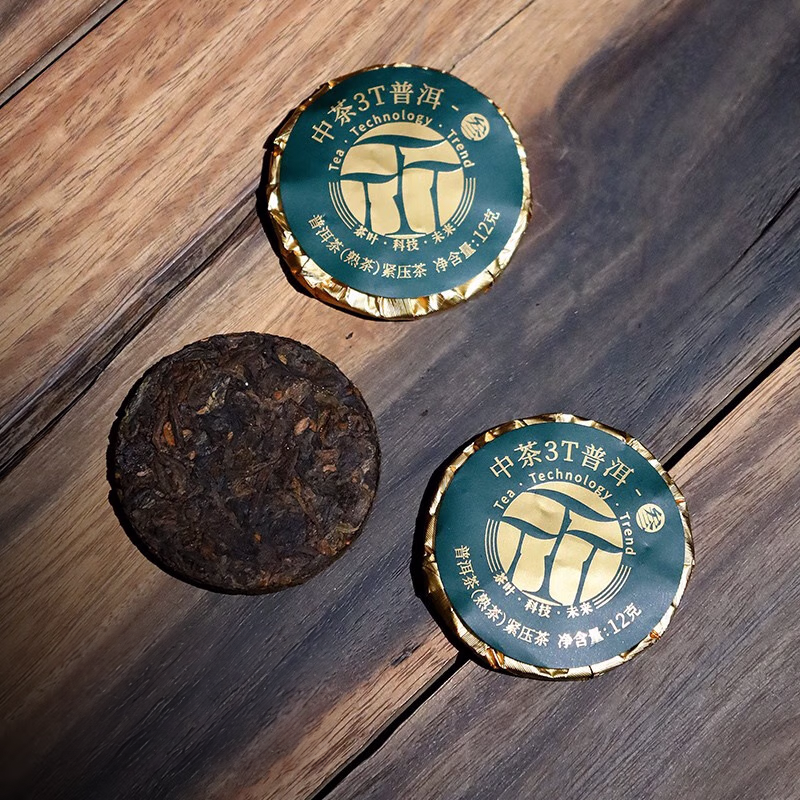
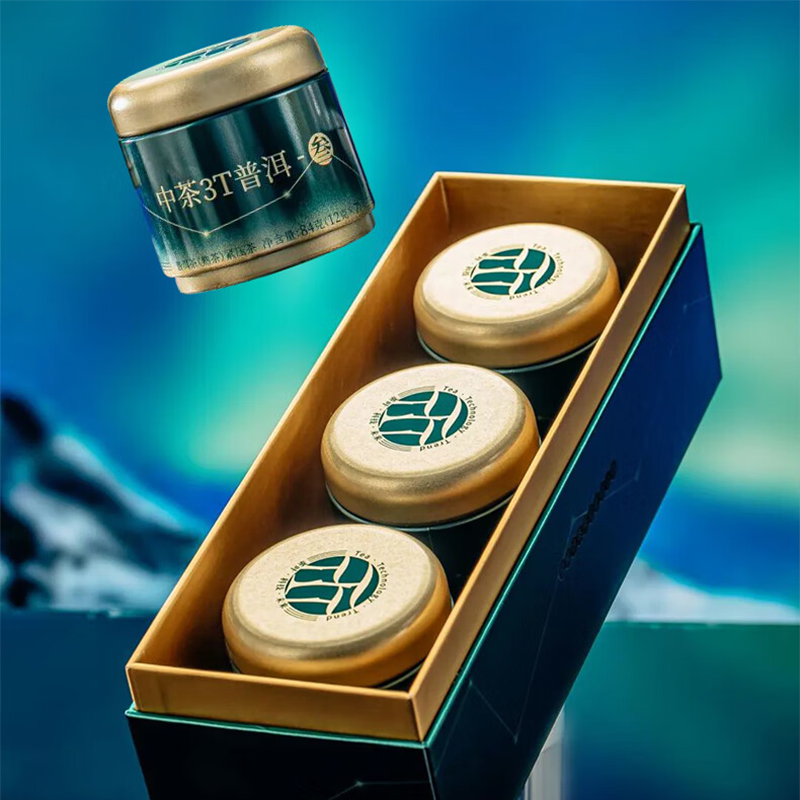
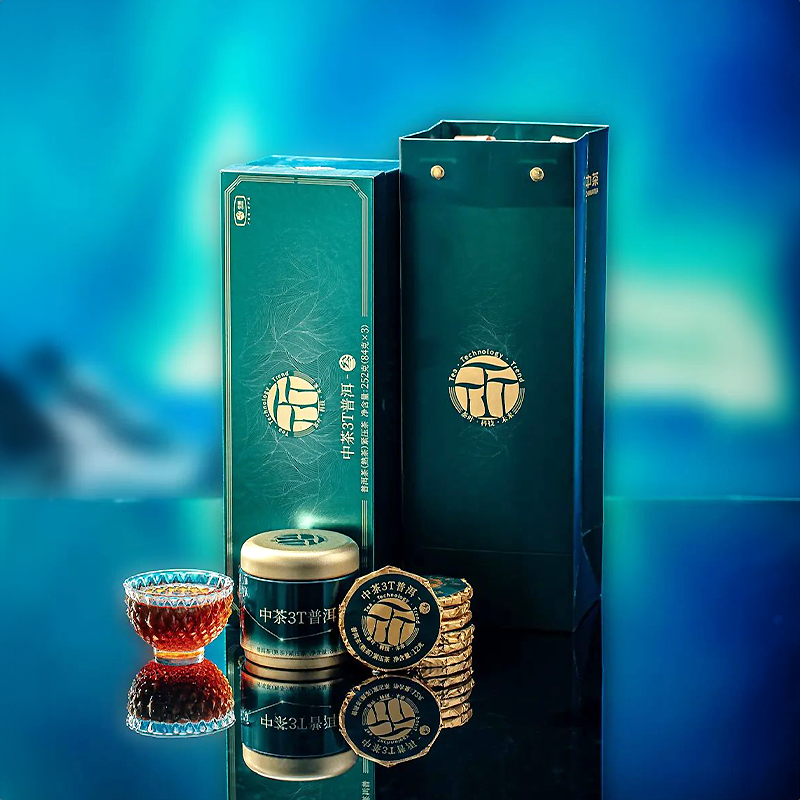
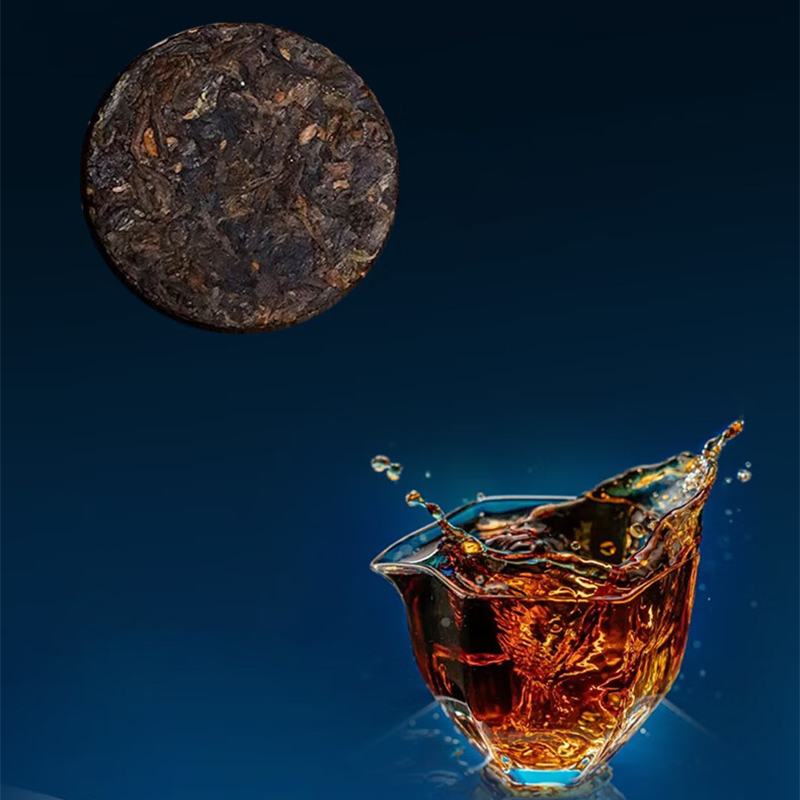
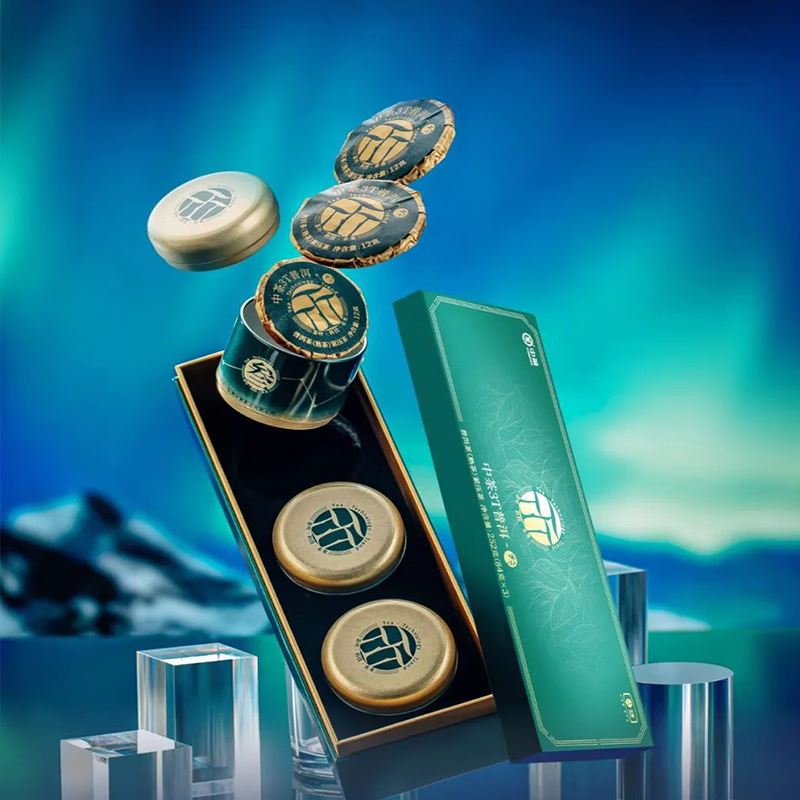
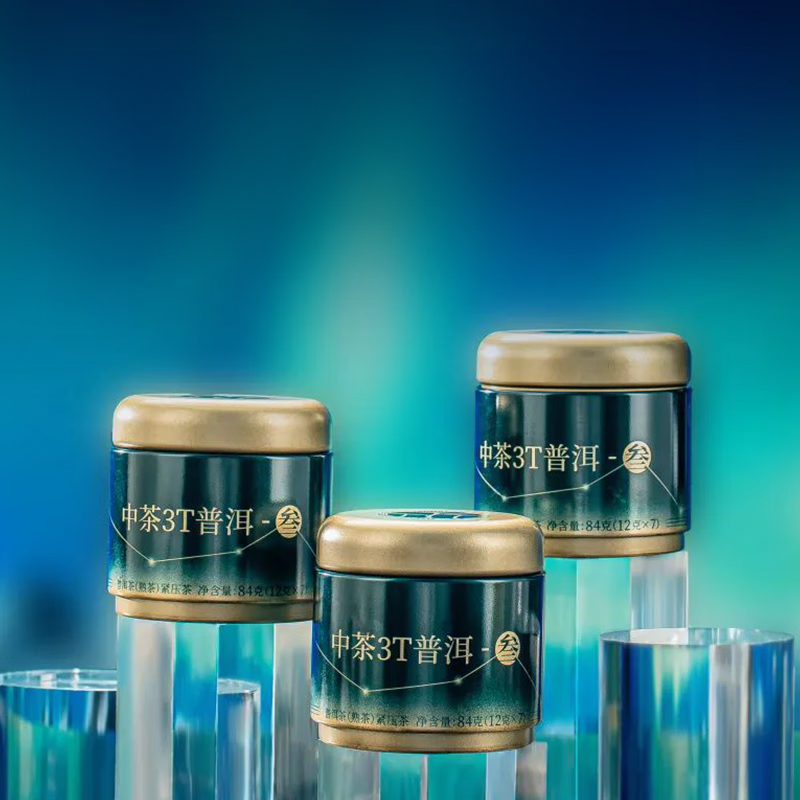
Features
Type: Ripe Pu Erh Tea
Origin: Brown Mountain, Yunnan Province, China
Weight: 12g/coin, 21coins (252g)/box (13-20 servings per box)
Leaves can be re-infused: 5 - 10 times
Caffeine: Low
-

Lowering Blood Lipids
-

Antioxidant Effects
-

Anti-aging
-

Anti-radiation
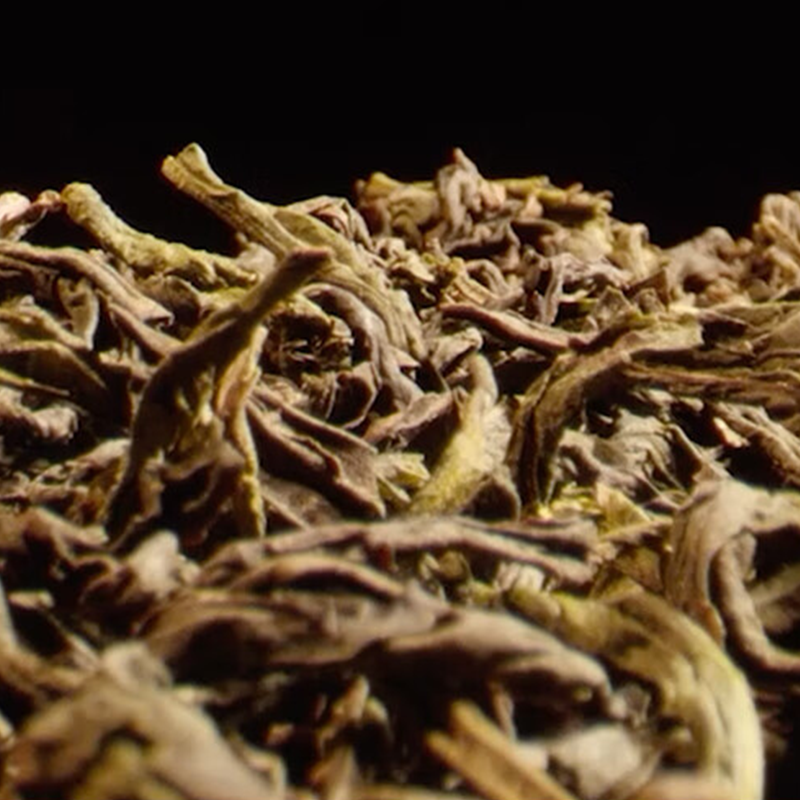
Premium “3T" Ripe Pu Erh Tea Coin (Large)
Artfully pressed into coins, this tea combines elegance with practicality. Its compact size guarantees effortless portability. Brewing perfection is achieved with 6g of tea leaves per serving. Each of these tea coins weighs 12g, making them ideal for sharing with friends at gatherings or for hosting a tea ceremony.

Flavor
The tea liquor has a deep, rich red color, with a glossy sheen. It delivers a strong, mature aroma with a hint of sweetness.
The thick texture is followed by the unique astringency taste characteristic of the tea leaves from Brown Mountain region.
The aftertaste diminishes quickly beaming with luscious sweetness. Even after nine infusions, the tea's charm still remains and the sweet fragrance lingers.
-

China Time-honored Brand
-

Global 500
-

Organic Tea
Steeping Instructions
-

Water
110ml/3.7 fl.oz
-

Temperature
100°C/212℉
-

Leaves
7-9g/ 1-1.5 tsp/ 0.25-0.3 oz
-

Time
First 3-5 infusions: 5-10 seconds
Subsequent infusions: 10-15 seconds
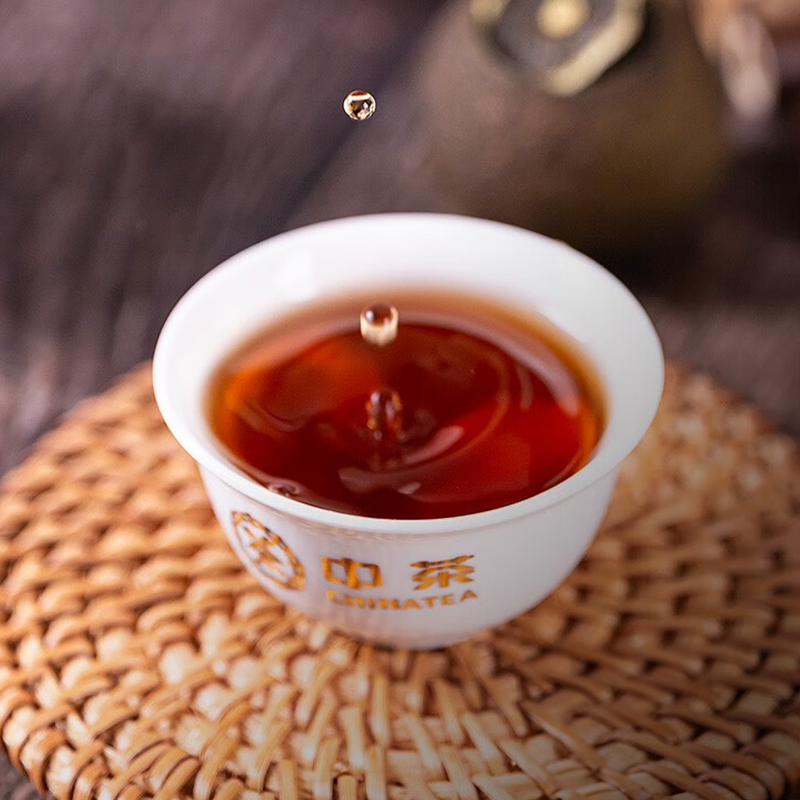
CHINATEA: A Legacy of Quality Tea
Established in 1949, CHINATEA is one of the earliest specialized state-owned enterprises in New China. The iconic trademark features a green "tea" character in the center, surrounded by red "Zhong" characters (meaning China), symbolizing green tea produced by Red China and implying that Chinese tea is sold worldwide.
CHINATEA's premium tea products have graced numerous significant national events, earning the prestigious title of "National Tea." This distinction has cemented CHINATEA's position as a representative of China, earning global acclaim and recognition. From Queen Elizabeth II in 1986 to President Vladimir Putin in 2007, CHINATEA has shared the unique experience of Chinese tea with dignitaries around the world. Their reputation for excellence continued at major international summits. CHINATEA served as the official tea provider for the 2014 APEC Summit, the 2017 Belt and Road Forum, and the 2017 BRICS Summit in Xiamen. In 2018, CHINATEA's Banzhang Ripe Pu'er Tea was selected for both the Shanghai Cooperation Organization Qingdao Summit and the First China International Import Expo, further solidifying their position as a symbol of Chinese hospitality.
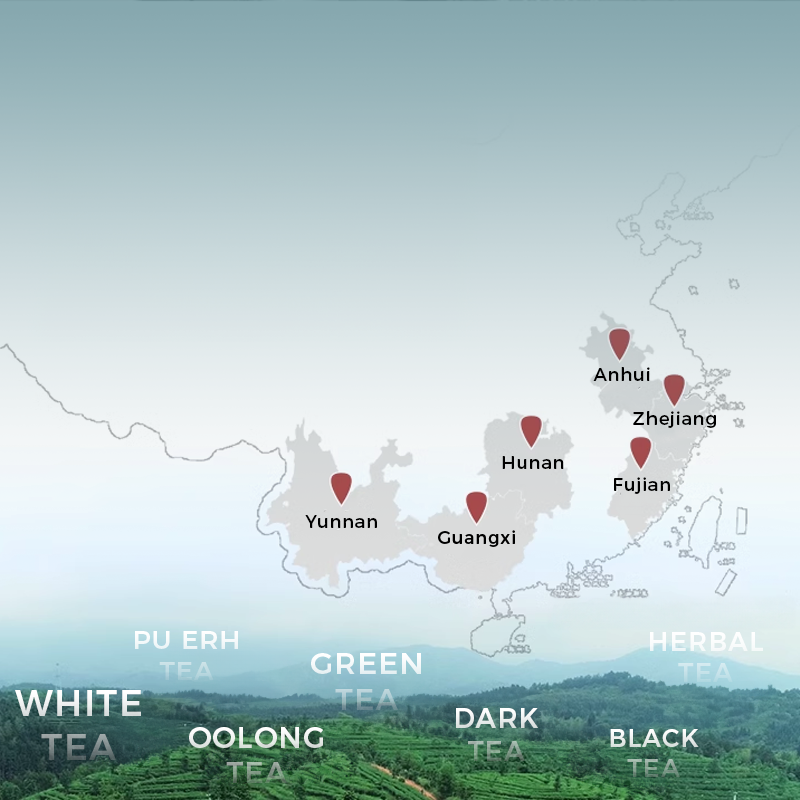
CHINATEA: A Tea Powerhouse
CHINATEA, a leader in Chinese tea, cultivates over 28,000 acres across six regions. Their 16 factories produce 30,000 tons of diverse teas annually. Innovation fuels CHINATEA. CHINATEA boast high-tech subsidiaries, award-winning tea masters, and expertise in Pu-erh, white, black, and instant tea processing.
Partnering with COFCO, CHINATEA champions research with their joint venture, focusing on tea's science and developing new processing techniques. CHINATEA actively shapes tea standards. Recognized for excellence, they established the China Tea Industry Technology Committee and set comprehensive standards for various teas, ensuring exceptional quality across the industry.
FAQ
What is Chi Tse Beeng Cha?
Pu'er tea is often compressed into various shapes, with one of the most common being the Beeng Cha (compressed tea cake). Beeng Cha typically takes the form of a round, flat disc or puck, ranging in size from as small as 100 grams to as large as 5 kilograms or more. Standard weights include 357 grams, 400 grams, and 500 grams. It is commonly referred to as Chi Tsu Ping Cha, which translates to "seven units cake tea," as seven of these tea cakes are typically packaged together for sale or transport.
Sheng (Raw) Pu'er v.s. Shu (Ripe) Pu'er
Raw Pu'er tea (sheng pu'er) is a type of tea that undergoes non-fermentation during its production process. This preserves the original characteristics and aroma of the tea leaves. Young raw Pu'erh shares similar characteristics to green tea. As the tea ages, it becomes more complex and is renowned for its stronger mouthfeel and long-lasting aftertaste.
Ripe Pu'er tea (shu pu'er), also known as cooked Pu'er, is a type of tea that undergoes wodui (wet piling), which involves piling, dampening, and turning the tea leaves in a manner similar to composting. This fermentation process gives the tea a rich, mellow flavor, and a smooth mouthfeel.
What are Pu'er tea and its health benefits?
Pu-erh is originating from China's Yunnan province, dating back to the Han Dynasty. It's crafted from the fresh leaves of a superior "large leaf" variety of Camellia Sinensis. It possesses a distinctive matured fragrance and a sweet, smooth aftertaste that improves over time. Pu-erh tea, akin to fine wine, gains value and refinement with aging.
Pu-erh's popularity surged due to its numerous health benefits. Ripe Pu-erh, being a fermented tea, aids digestion and is abundant in polyphenols, aiding in detoxification and combating free radicals. Moreover, Pu-erh promotes heart health as it contains statins that reduce cholesterol levels. Its diverse bacteria composition supports gut health, while also safeguarding the nervous system and enhancing brain function. For optimal weight loss benefits, it's recommended to consume Pu-erh tea one hour after a meal to help eliminate excess grease and aid in the digestion of hard-to-digest fats.
How to break a pu'er tea cake properly?
1. Prepare a cha pan (tea tray) and a cha zhen (tea pick). Using a chaban is ideal to catch any loose tea pieces.
2. Unwrap the tea cake and position it face down, with the smooth side facing down, typically where the paper was attached.
3. Using a Pu-erh tea pick, gently make three holes in the cake, aiming for spots with softer resistance. Be cautious not to apply too much pressure or accidentally prick yourself.
4. Once the needle is inserted, delicately wiggle it to loosen the tea at each hole until you can easily separate a small piece.
5. Transfer the loosened tea into a cha he (tea box), readying it for brewing. The tea box should be sealed to maintain the freshness of the tea leaves.

















